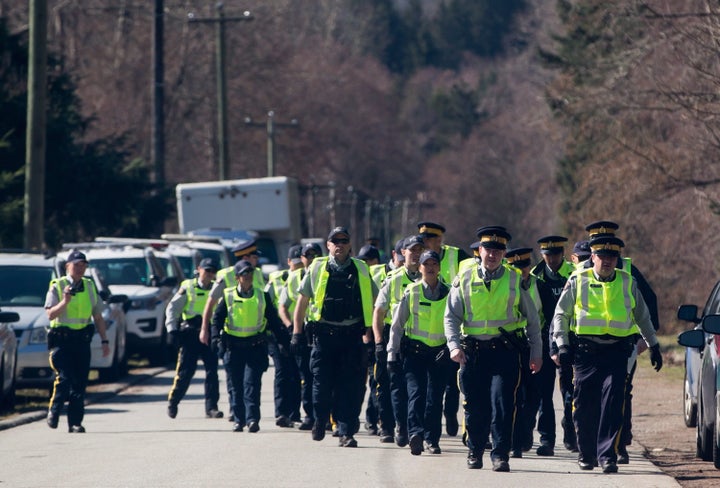
A dispute between RCMP management and its members this weekend over whether officers should be allowed to wear the controversial “thin blue line” symbol points to growing tension within Canada’s largest police force, experts say.
Late last week, the RCMP directed its members to stop displaying the “subdued” black and white Canadian flag with a blue line across the middle of their uniforms and equipment, reported the Toronto Star.
By Monday, the National Police Federation, which represents 20,000 RCMP members, announced on Facebook it does not support management’s decision and will be ordering new Thin Blue Line patches for all front-line officers to “wear proudly.”
“It delineates the important and often dangerous role police officers play in providing a barrier between social order and chaos,” the union said in its statement. “It has become a symbol of members’ pride and solidarity in caring for their communities and each other, potentially with the ultimate sacrifice.”
The union said it will defend any Mountie who wears the Thin Blue Line and faces disciplinary action.
“For many it also serves as an ongoing tribute and reminder of fallen colleagues.”
However, the symbol is also tied to the Blue Lives Matter campaign, founded in the U.S. as a countermovement to Black Lives Matter, and creates a “reverse discrimination narrative” that casts police as victims and shields them from accountabiltiy, wrote York University Profs. Steven Tufts and Mark Thomas in a study published in January.
“It’s a continuous strategy of police officers and their unions of evoking symbolism as a means of protest against what’s happening publicly,” Tufts told HuffPost Canada. “It reeks of fear within the police union.”
Watch: “Is that the best?” Minister asks of RCMP efforts to deal with racism. Story continues below.
Police officers across Canada are facing increased scrutiny for their use of force, especially against Black, Indigenous and people of colour, at an intensity not seen since the civil rights movement in the 1950s, Tufts said. Politicians are seizing on this moment to introduce more oversight and trim police budgets, or at least slow expansion.
In the throne speech last month, for example, the Liberal government vowed to “move forward on enhanced civilian oversight of our law enforcement agencies, including the RCMP.”
At least some of the RCMP’s top brass understand that by only appealing to their usual base through campaigns like the Thin Blue Line, they are isolating large swaths of Canadians who demand more accountability, said Tufts.
In response to management’s shift in thinking, the police union is pushing back through a “proxy fight” over what can and can’t be displayed on uniforms, he said.
Other Canadian police services have grappled with similar tensions in recent months. The Ontario Provincial Police union, for example, flew the flag outside its headquarters in June.
Amid calls for Ottawa police to become more inclusive, Police Chief Peter Sloly told board members in June that officers have to “abandon the concept of the ‘thin blue line’ that separates us from the community and instead embrace a ‘thin blue thread’ culture that sees police interwoven with … the fabric of society.”
But one of the limited ways officers can express solidarity with other uniformed members in the face of widespread criticism is to wear the thin blue line patch, said Christian Leuprecht, a political science professor at the Royal Military College and Queen’s University, noting they’re almost never allowed to speak publicly.
“The last few months have probably been the most difficult that uniformed members have had in their entire career,” Leuprecht said. “This is less about the relationship between police and civil society and more about sworn members making a statement that management hasn’t provided them with support.
“That’s why the union is not backing down on this.”
Regardless of the motivations, the messaging that the only thing that keeps society in order is police is “dangerous” and “ridiculous,” Tufts said.
“Order is maintained through a whole range of institutions — health care, welfare, education, the economy. What maintains police is public compliance and trust in the system.”